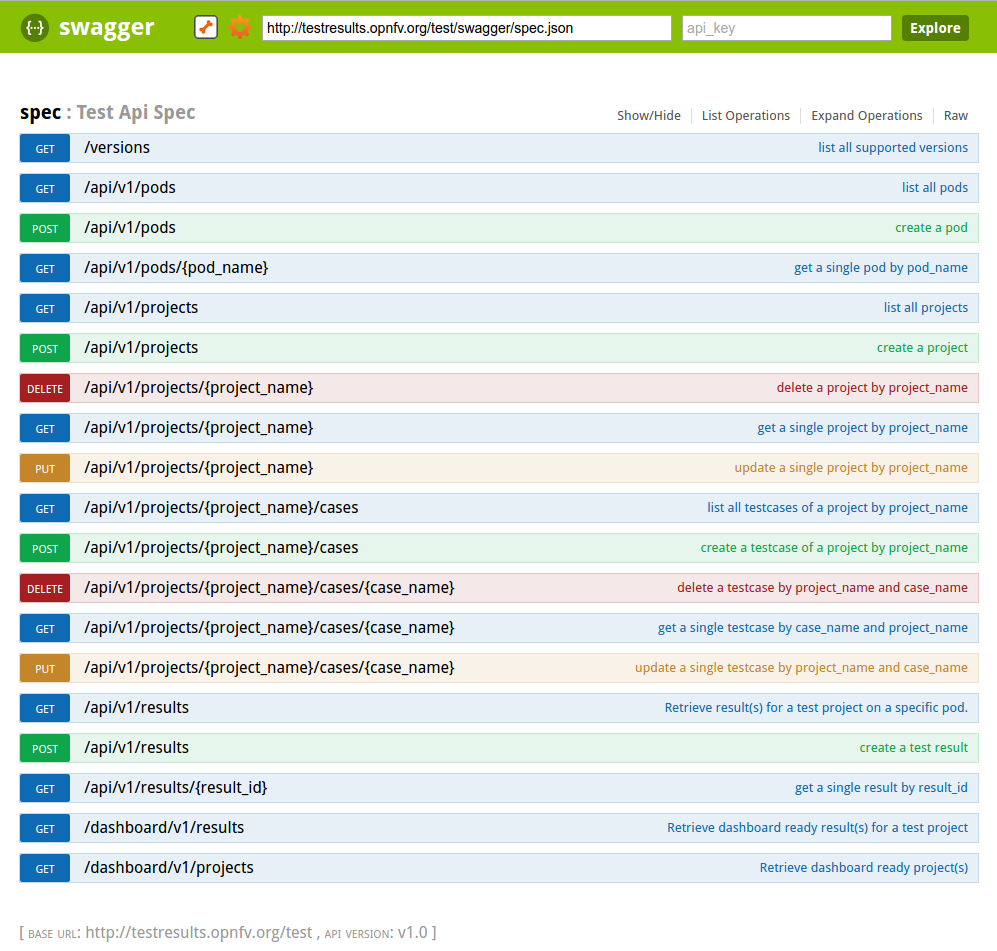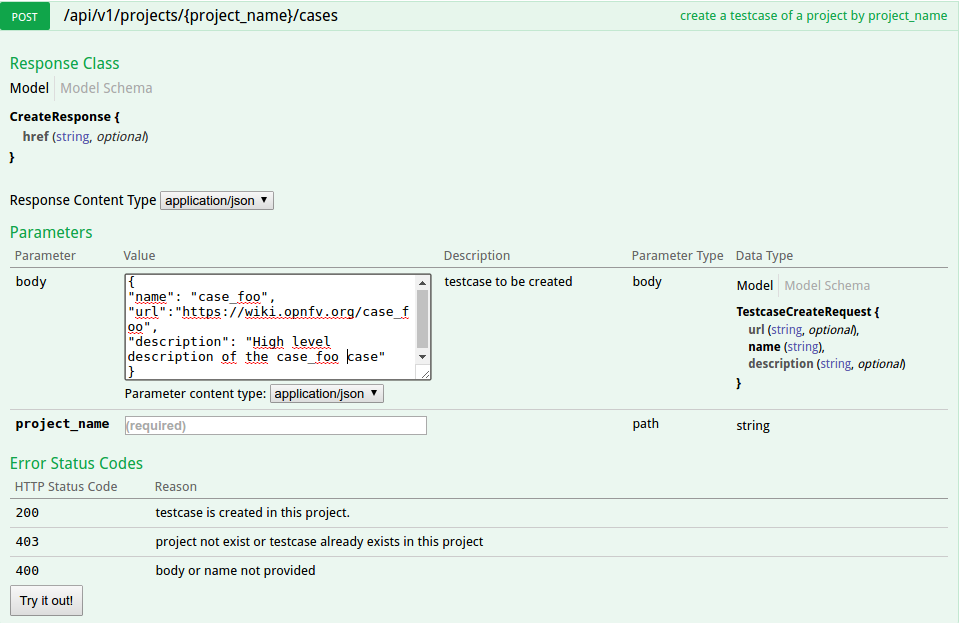Testing developer guide¶
Introduction¶
The goal of this guide consists in providing some guidelines for new developers involved in test areas.
Developer journey¶
There are several ways to join test projects as a developer. In fact you may:
Develop new test cases
Develop frameworks
Develop tooling (reporting, dashboards, graphs, middleware,…)
Troubleshoot results
Post-process results
These different tasks may be done within a specific project or as a shared resource accross the different projects.
If you develop new test cases, the best practice is to contribute upstream as much as possible. You may contact the testing group to know which project - in Anuket or upstream - would be the best place to host the test cases. Such contributions are usually directly connected to a specific project, more details can be found in the user guides of the testing projects.
Each Anuket testing project provides test cases and the framework to manage them. As a developer, you can obviously contribute to them. The developer guide of the testing projects shall indicate the procedure to follow.
Tooling may be specific to a project or generic to all the projects. For specific tooling, please report to the test project user guide. The tooling used by several test projects will be detailed in this document.
The best event to meet the testing community is probably the plugfest. Such an event is organized after each release. Most of the test projects are present.
The summit is also a good opportunity to meet most of the actors [DEV4].
Best practices¶
All the test projects do not have the same maturity and/or number of contributors. The nature of the test projects may be also different. The following best practices may not be acurate for all the projects and are only indicative. Contact the testing group for further details.
Repository structure¶
Most of the projects have a similar structure, which can be defined as follows:
`-- home
|-- requirements.txt
|-- setup.py
|-- tox.ini
|
|-- <project>
| |-- <api>
| |-- <framework>
| `-- <test cases>
|
|-- docker
| |-- Dockerfile
| `-- Dockerfile.aarch64.patch
|-- <unit tests>
`- docs
|-- release
| |-- release-notes
| `-- results
`-- testing
|-- developer
| `-- devguide
|-- user
`-- userguide
API¶
Test projects are installing tools and triggering tests. When it is possible it is recommended to implement an API in order to perform the different actions.
Each test project should be able to expose and consume APIs from other test projects. This pseudo micro service approach should allow a flexible use of the different projects and reduce the risk of overlapping. In fact if project A provides an API to deploy a traffic generator, it is better to reuse it rather than implementing a new way to deploy it. This approach has not been implemented yet but the prerequisites consiting in exposing and API has already been done by several test projects.
CLI¶
Most of the test projects provide a docker as deliverable. Once connected, it is possible to prepare the environement and run tests through a CLI.
Dockerization¶
Dockerization has been introduced in Brahmaputra and adopted by most of the test projects.
Code quality¶
It is recommended to control the quality of the code of the testing projects, and more precisely to implement some verifications before any merge:
pep8
pylint
unit tests
The code of the test project must be covered by unit tests. The coverage shall be reasonable and not decrease when adding new features to the framework. The use of tox is recommended. It is possible to implement strict rules (no decrease of pylint score, unit test coverages) on critical python classes.
Third party tooling¶
Several test projects integrate third party tooling for code quality check and/or traffic generation. Some of the tools can be listed as follows:
Project |
Tool |
Comments |
|---|---|---|
Functest |
Tempest Rally Refstack RobotFramework |
OpenStack test tooling OpenStack test tooling OpenStack test tooling Used for ODL tests |
VSPERF |
TODO |
Testing group configuration parameters¶
Testing categories¶
The testing group defined several categories also known as tiers. These categories can be used to group test suites.
Category |
Description |
|---|---|
Healthcheck |
Simple and quick healthcheck tests case |
Smoke |
Set of smoke test cases/suites to validate the release |
Features |
Test cases that validate a specific feature on top of Anuket Those come from Feature projects and need a bit of support for integration |
Components |
Tests on a specific component (e.g. OpenStack, OVS, DPDK,..) It may extend smoke tests |
Performance |
Performance qualification |
VNF |
Test cases related to deploy an open source VNF including an orchestrator |
Stress |
Stress and robustness tests |
In Service |
In service testing |
Testing domains¶
The domains deal with the technical scope of the tests. It shall correspond to domains defined for the certification program:
compute
network
storage
hypervisor
container
vim
mano
vnf
…
Testing coverage¶
One of the goals of the testing working group is to identify the poorly covered areas and avoid testing overlap. Ideally based on the declaration of the test cases, through the tags, domains and tier fields, it shall be possible to create heuristic maps.
Reliability, Stress and Long Duration Testing¶
Resiliency of NFV refers to the ability of the NFV framework to limit disruption and return to normal or at a minimum acceptable service delivery level in the face of a fault, failure, or an event that disrupts the normal operation [DEV5].
Reliability testing evaluates the ability of SUT to recover in face of fault, failure or disrupts in normal operation or simply the ability of SUT absorbing “disruptions”.
Reliability tests use different forms of faults as stimulus, and the test must measure the reaction in terms of the outage time or impairments to transmission.
Stress testing involves producing excess load as stimulus, and the test must measure the reaction in terms of unexpected outages or (more likely) impairments to transmission.
These kinds of “load” will cause “disruption” which could be easily found in system logs. It is the purpose to raise such “load” to evaluate the SUT if it could provide an acceptable level of service or level of confidence during such circumstances.
How TOs¶
How can I contribute to a test project?¶
As any project, the best solution is to contact the project. The project members with their email address can be found under https://git.opnfv.org/<project>/tree/INFO
How do I integrate my tests in CI?¶
It shall be discussed directly with the project you are working with. It is done through jenkins jobs calling testing project files but the way to onboard cases differ from one project to another.
How to declare my tests in the test Database?¶
If you have access to the test API swagger (access granted to contributors), you may use the swagger interface of the test API to declare your project. The URL is http://testresults.opnfv.org/test/swagger/spec.html.

Click on Spec, the list of available methods must be displayed.

For the declaration of a new project use the POST /api/v1/projects method.
For the declaration of new test cases in an existing project, use the POST /api/v1/projects/{project_name}/cases method
How to push your results into the Test Database?¶
The test database is used to collect test results. By default it is enabled only for CI tests from Production CI pods.
Please note that it is possible to create your own local database.
A dedicated database is for instance created for each plugfest.
The architecture and associated API is described in previous chapter. If you want to push your results from CI, you just have to call the API at the end of your script.
Where can I find the documentation on the test API?¶
The Test API is now documented in this document (see sections above). You may also find autogenerated documentation in http://artifacts.opnfv.org/releng/docs/testapi.html
I have tests, to which category should I declare them?¶
See table above.
The main ambiguity could be between features and VNF. In fact sometimes you have to spawn VMs to demonstrate the capabilities of the feature you introduced. We recommend to declare your test in the feature category.
VNF category is really dedicated to test including:
creation of resources
deployement of an orchestrator/VNFM
deployment of the VNF
test of the VNFM
free resources
The goal is not to study a particular feature on the infrastructure but to have a whole end to end test of a VNF automatically deployed in CI. Moreover VNF are run in weekly jobs (one a week), feature tests are in daily jobs and use to get a scenario score.
Where are the logs of CI runs?¶
Logs and configuration files can be pushed to artifact server from the CI under http://artifacts.opnfv.org/<project name>
References¶
[DEV4]: Conversation with the testing community, OPNFV Beijing Summit
[DEV5]: GS NFV 003
